simulate this circuit – Schematic created using CircuitLab
I made this simple NE555 Flyback driver. I used a 9V Battery to power the NE555 and a 24V 6A power supply to power the flyback. The problem is that the MOSFET gets very hot in a few seconds. I tried using a fast diode with a reverse recovery time of 100nS in between the source and drain of the MOSFET, but that didn't do anything. My MOSFET died after a minute of usage. What can I do to prevent it from heating/dying? Also, If I use another power supply instead of the 9V which is something like 12V @ 500mA - 1A, The chip gets hot and explodes. Why is that? If I use the 9V battery, the chip works just fine. Also, the MOSFETS are kind of expensive. I only have 2 left. Help would be really appreciated.
[Edit: Spectator added the following redrawn schematic]
